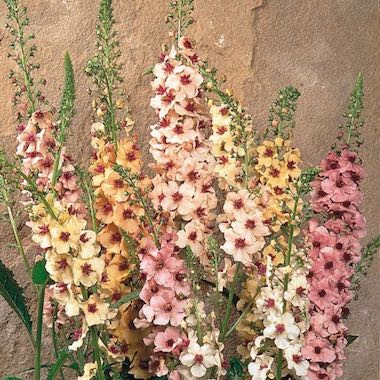Garden Pests: Cucumber Beetles
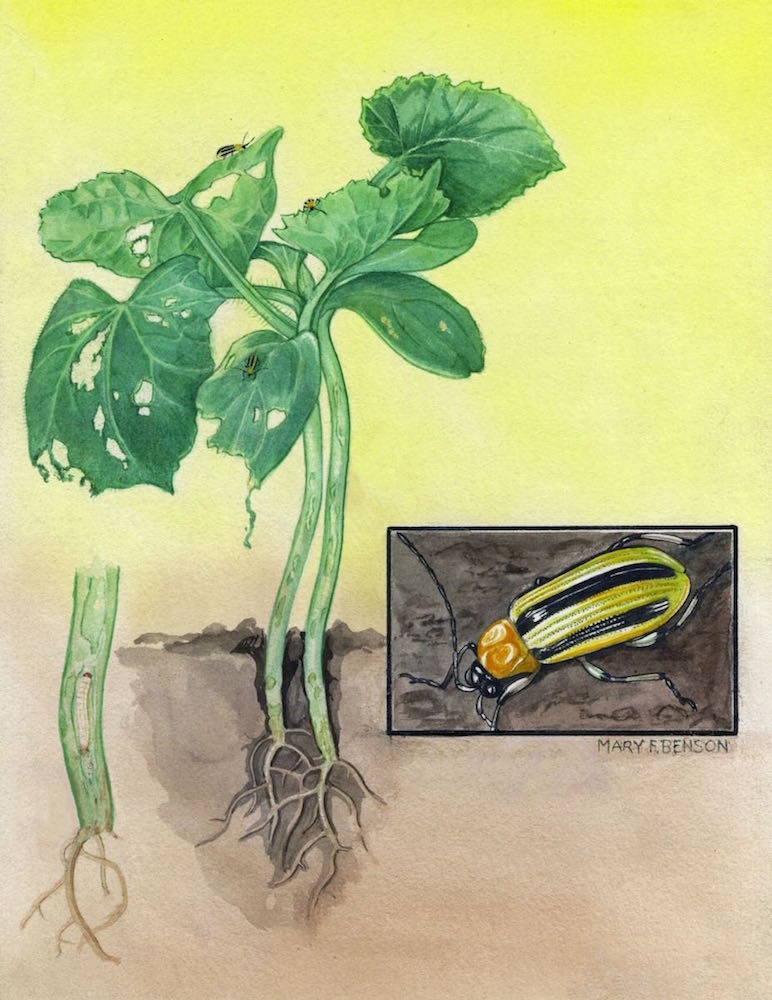
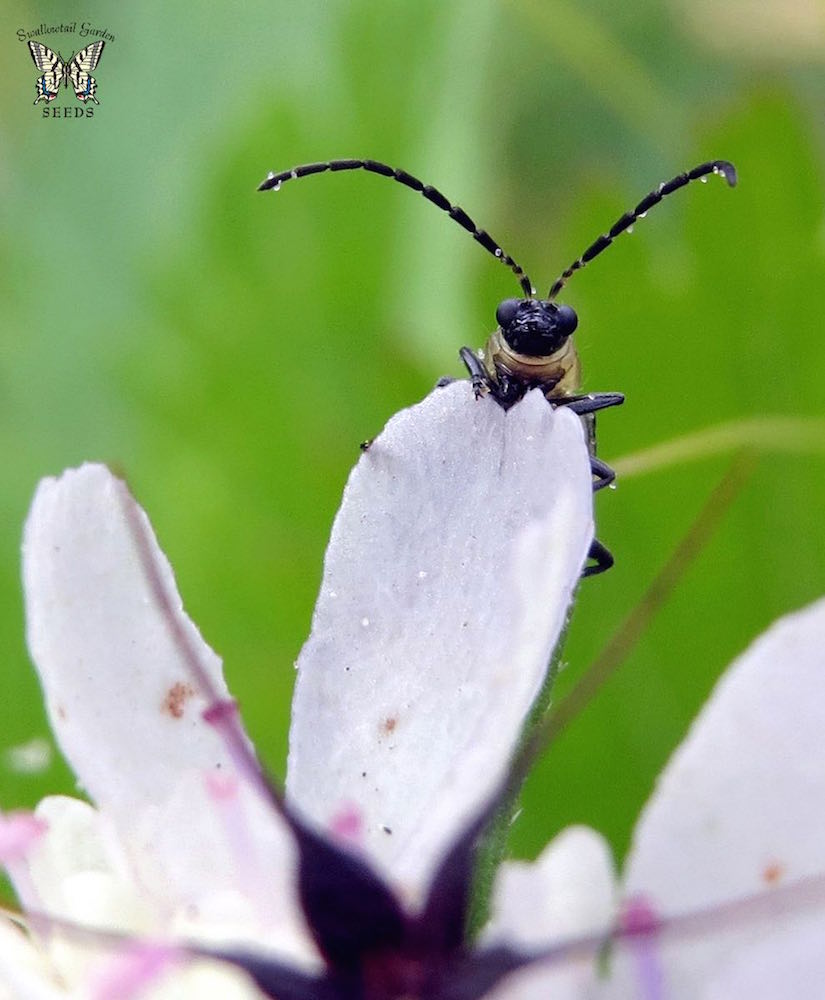
The Pest:
There are two types of cucumber beetles, striped (Acalymma vittatum) and spotted (Diabrotica undecimpunctata). Both types are about 1/4 inch long and yellowish-green in color (sometimes orangish-green), one with black lengthwise stripes and the other with black spots.
Both types of cucumber beetles are found throughout North America.
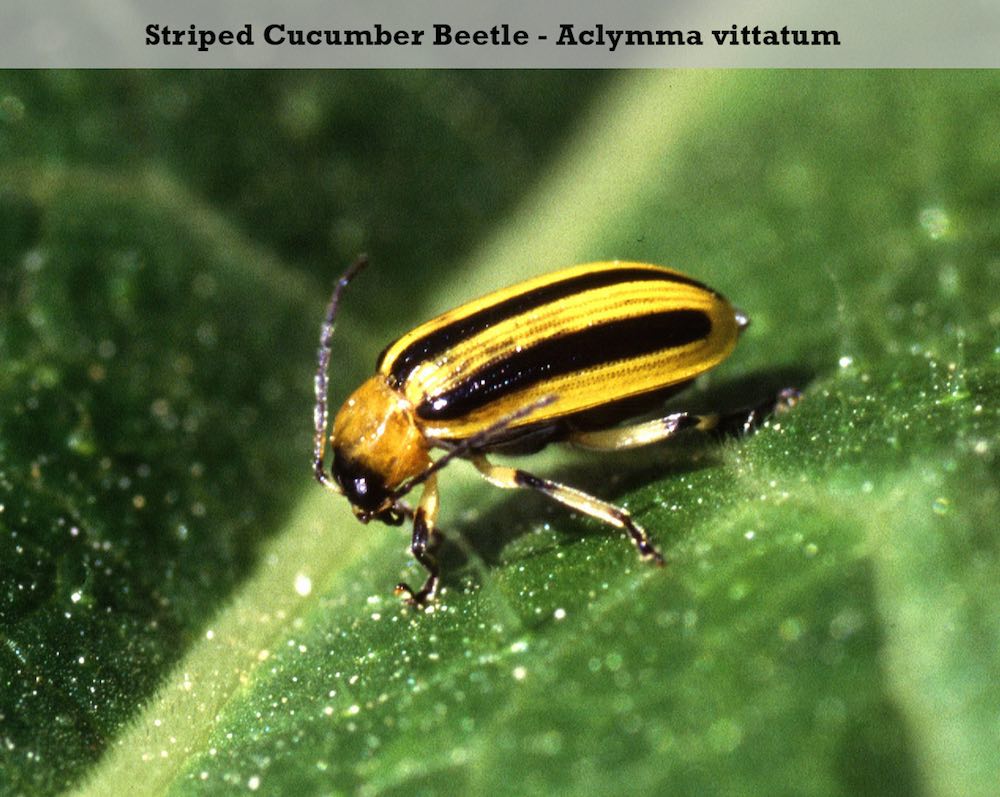
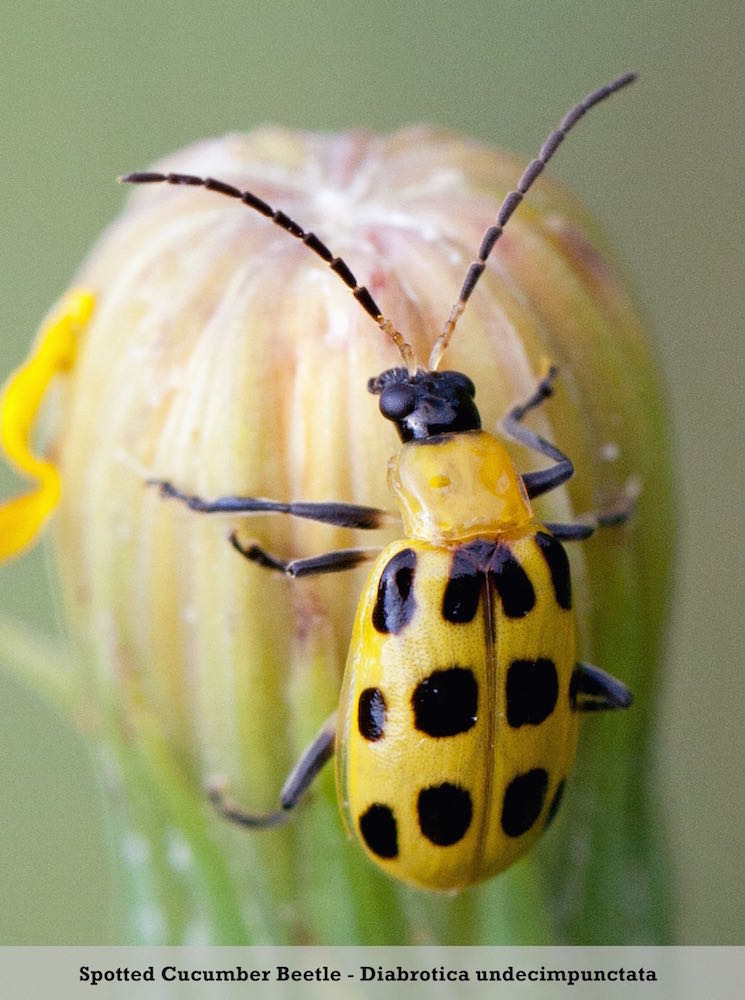
The Problems:
Both types of cucumber beetles love to feed on cucumber plants and other plants in the cucurbit family such as squash, pumpkins and melons. While striped cucumber beetles rarely feed on other types of plants, spotted cucumber beetles happily feed on hundreds of different types of plants including beans, corn, eggplant and many flowering ornamentals.
Striped cucumber beetles lay their eggs at the base of cucurbit plants such as cucumbers, squash and melons and their larvae feed on the roots of these plants. Spotted cucumber beetles tend to lay their eggs on corn and other grasses and their larvae feeds on the roots of these plants. Through the larvae feeding on roots and adults feeding on leaves, stems, flowers and fruits, cucumber beetles can stunt plant growth, decrease food and flower production, transmit diseases such as bacterial wilt and mosaic virus and ultimately kill plants, especially younger plants.
Cucumber beetle damage is visible in many forms and can look similar to damage caused by other pests. Yellowing, wilting or misshapen leaves, leaves with holes in them, stunted plants and stunted fruits are all common signs of cucumber beetle damage.
The Solutions:
In my small personal garden, I often try to kill cucumber beetles one-by-one with my fingers. This method can work quite well if done consistently throughout the growing season. If you’re looking for cucumber beetles in your garden, they can often be found on leaves or flowers and are sometimes hiding on the underside of leaves. When disturbed, they may fall to the ground and go into the soil or quickly fly away. If you want to kill them by hand, you’ll need to move fast.
On larger farms and when infestations are worse, vacuums can be used to capture large numbers of the pests. I’ve had friends successfully use shop vacuums and leaf blower/vacuums.
Adult cucumber beetles can overwinter in dense grasses, leaves and other garden debris, both above and below ground. Cleaning up the garden after harvests and between seasons can help limit the number of cucumber beetles you’ll have in the future.
Covering seedlings with row cover (or similar type of cover that allows air and light to pass through) until they’re mature enough to handle some minor to moderate pest damage can help prevent loss of plants even if cucumber beetles are present in your garden. Row cover should be removed once plants begin to flower so you can fully enjoy the flowers and allow for pollination if you’re growing fruits and veggies.
Beneficial insects such as ladybugs, green lacewings and soldier bugs can be purchased and added to your garden or attracted to your garden by planting marigolds, calendulas, daisies, dill and other plants that attract beneficial insects. Beneficial insects feed on the cucumber beetles and their larvae.
There are multiple types of traps that can be purchased or made. Sticky traps with pheromone lures can catch quite a few. They typically need to be replaced every 3 to 4 weeks and even most small gardens will need multiple traps to ensure adequate coverage.
Natural insecticides such as neem oil and insecticidal soap can be used to control cucumber beetle populations. These work best when applied liberally to all surfaces of the plant, including the underside of the leaves. After any significant rain, new applications of neem oil or insecticidal soap will be needed if plants are still too small to handle some damage from remaining cucumber beetles.
I have not tried the following method but it sounds like it can work quite well. Spraying young plants with a protective barrier of kaolin clay, sold under the name Surround WP, can significantly decrease damage caused by cucumber beetles. When spraying plants, it is important to spray the underside of leaves as well. For best results, a new coat will need to be applied after each time it rains. Once plants are large enough to handle some damage from cucumber beetles, you can stop applying additional coats.
Eliminating all cucumber beetles from your garden is unlikely but using a few of the methods mentioned above can help to significantly reduce the population of cucumber beetles in your garden so you can enjoy a bigger and more beautiful bounty of food and flowers.
Ben



